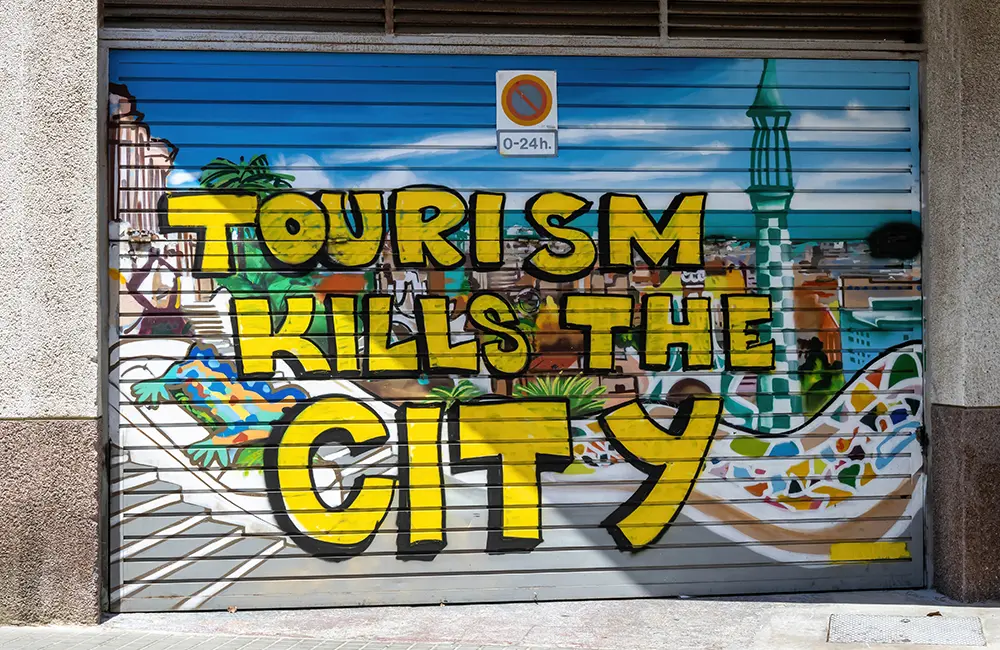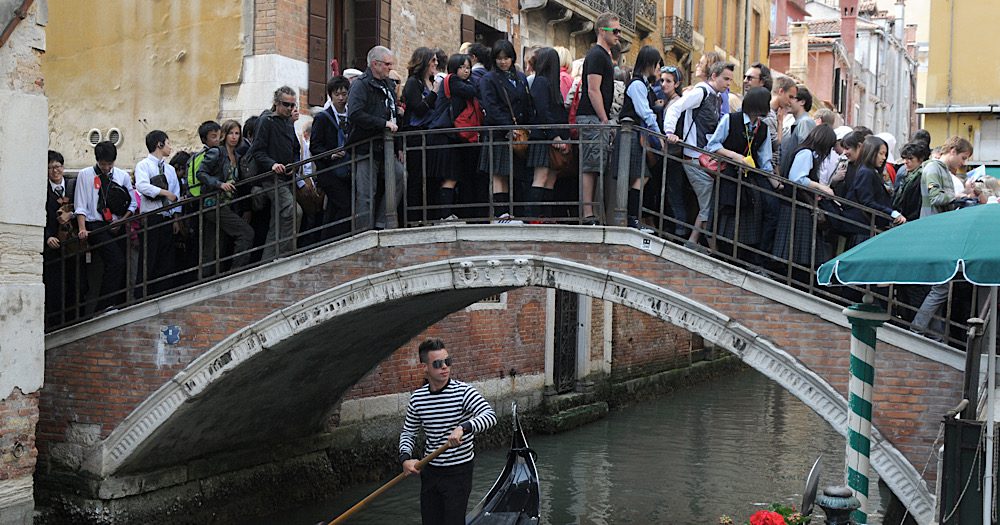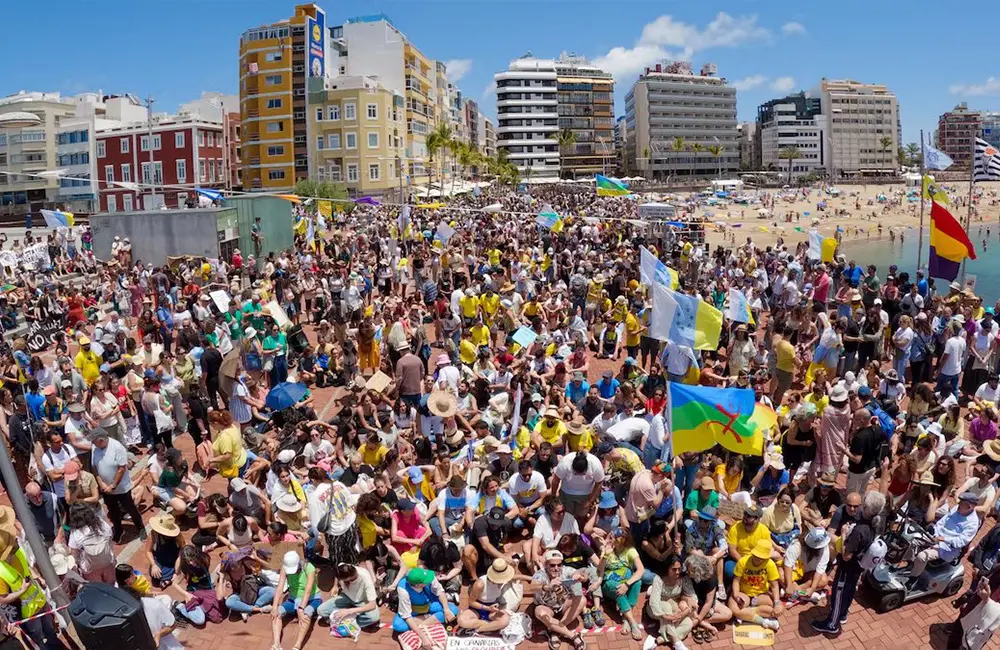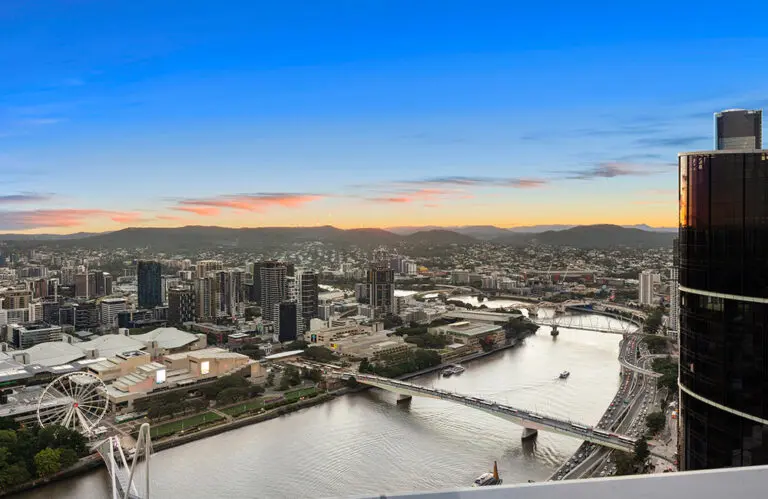As another European summer gets underway, destinations across the continent are already reaching overtourism boiling point. From Zante’s cliffside lookouts to the narrow laneways of Barcelona, the backlash against selfie tourism, short-term rentals, and unchecked visitor numbers is growing louder and more emotional. And they’ve only just begun.
In Spain’s Balearic Islands, local leaders are considering restrictions on access to viral, gram-worthy spots such as Formentor in Mallorca, following years of traffic congestion, environmental damage, and growing local frustration. Tourism Minister Jaume Alzamora told The Guardian that “mass saturation” had pushed the region to an inflection point.
“We’re reaching a point where we’re no longer promoting a destination—we’re promoting a problem,” he said.
Meanwhile, across the Aegean, the Greek island of Zakynthos (Zante) has been named Europe’s most crowded summer destination, with a staggering 149,887 tourists joining 1,000 locals during the peak season in 2024, according to a new report by UK-based Which?
According to the report, Paris too, perhaps unsurprisingly, has the highest number of tourists (les sardines?) per square kilometre, with 418,280 overnight stays, followed by Athens and Copenhagen.
Barcelona’s cry for breathing room

Last summer in Spain was marked by marches and protests against tourists, with locals taking to the streets to express their discontent over the impact of mass tourism on their quality of life.
In the world capital of overtourism, Barcelona, the tension has once again spilled over. Last month at the iconic Sagrada Familia (also now known as the Selfie Circus), frustrated locals resorted to spraying tourists with water pistols, just as they famously did the previous year, to protest the overwhelming volume of short-term visitors in their neighbourhoods.
In 2024, Barcelona welcomed approximately 15.5 million tourists—roughly nine times its resident population of 1.7 million. And with another busy summer forecast, many residents fear the cultural and social tipping point is already behind them.
In what is a stirring opinion piece for The Guardian, Barcelona-based writer Stephen Burgen summed up the situation:
“It is not that we hate tourists… we simply want our city back.”
The city has already banned short-term rentals in some zones, raised tourist taxes, and halted new hotel developments. But these moves, while important, may no longer be enough.
Consider, too, that in 2024, Spain welcomed nearly 100 million international visitors, almost double its population, and 10% more than the previous year. Australia, by comparison, welcomed around 8.3 million arrivals in the same period.
A reckoning underway
None of this is new, of course. But it’s getting worse every year. So, where then to begin in creating solutions?
The Balearic government is now urgently developing a new tourism strategy that combines education and regulation, with likely measures including limits on access to natural and heritage areas, higher fines for disrespectful behaviour, and awareness campaigns to influence traveller behaviour.
With 247 “transformation factors” under review, the aim is not to ban visitors, but to find a sustainable balance that supports economic, social, and environmental wellbeing.
Many European tourism destinations, including Rome, Amsterdam and Paris, already incorporate back-end tourist taxes into their pricing, covering accommodations, entry fees, and local services.
In Amsterdam, tourists pay around €22 per night (AU$36), in addition to the standard hotel rate.
Greece introduced a “climate crisis resilience fee” in 2024, applied to hotel stays, with rates varying by accommodation class.
And Iceland reinstated a US$4 per-night tourist tax (approximately AU$7) in January 2024 to help preserve its fragile natural environment.
Venice leads with bold policy

In 2024, Venice introduced a €5 (approximately AU$8) entry fee for day-trippers as part of a pilot program aimed at managing overtourism. The cost is applied on 29 high-traffic days between April 25 and July 14, targeting peak weekends and public holidays.
The trial generated €2.4 million (AU$4 million) in revenue. However, with initial running costs of around €2.7 million, the scheme began as a loss. However, City officials forecast a €1–1.5 million annual surplus in the coming years, earmarked for waste collection and resident services.
In 2025, the program will expand to 54 days, running from April 18 to July 27. A new tiered structure has also been introduced: those booking at least four days in advance still pay €5, while last-minute bookings incur a €10 (AU$16) charge.
What does it mean for the trade?
It’s certainly not about dissuading people from travelling to Europe this coming Summer. But rather a pertinent reminder to champion slower, more considered travel, including:
- Promoting shoulder-season itineraries
- Highlighting lesser-known destinations that will welcome tourists with open arms
- Supporting local-led, culturally respectful and regenerative experiences
- Educating clients on the impact of their footprint, which should be a positive one
It’s also a time to educate ourselves, collaborate widely, and stay informed about this rapidly evolving space. Your clients will thank you for it later.
Sustainability and regeneration aren’t just about the environment. It’s about protecting community life, cultural integrity, and the reasons we fall in love with places in the first place.
Because when the world’s most loved destinations start saying “enough,” it’s not just a warning, it’s a moment to evolve how we travel, and how we promote and sell it for the long term.






